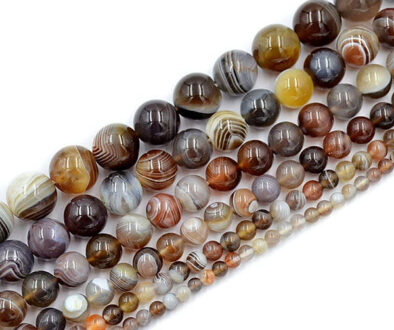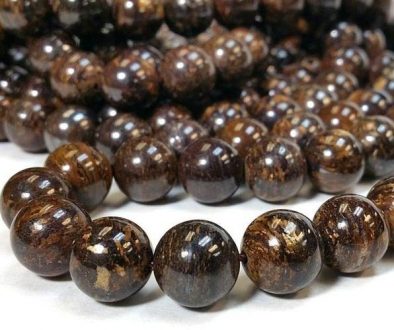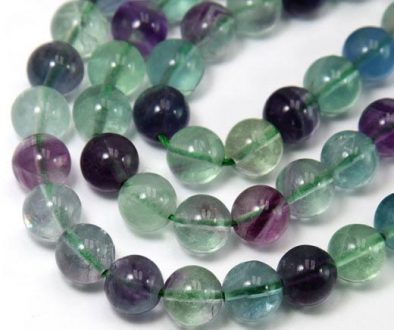Opal
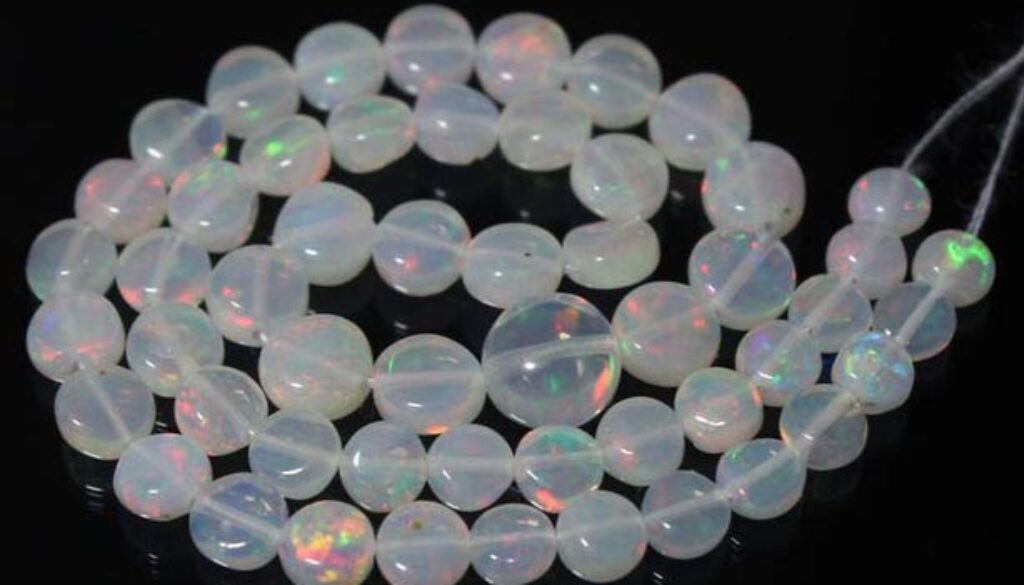
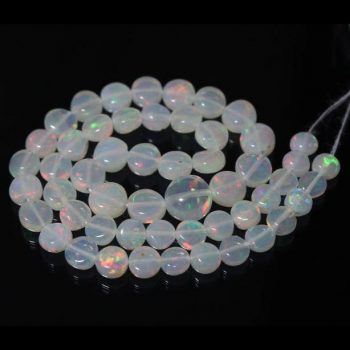
Opal is hydrated silicon dioxide – submicroscopic silica spheres bonded together with water and additional silica, sometimes containing the minerals cristobalite and tridymite. It is amorphous, meaning it has no crystalline structure and no definite chemical composition and is therefore considered to be a “mineraloid” rather than a “mineral.”
Over time, this gelatinous mix seeped deep into fractures, veins and between the layers of underground sedimentary rock, and the solidified material, Opal, formed as much of the water evaporated. In rare circumstances, Opal formed in masses exhibiting botryoidal growth, in stalagmitic form, or became replacement material in fossils. Even after solidifying, Opal maintains a water content ranging from 3% to 21% by weight, usually between 6% and 10%. [www.mindat.org][www.geology.com][en.wikipedia.org][www.gia.edu][Lembo, 245]
Of the three basic types of Opals, “Precious Opal,” also called “Rainbow Opal,” is the rarest, mined in a limited number of locations worldwide and produces brilliant flashes or streaks of iridescent color when turned in the light, a phenomenon known as “play of color.” The color is not due to any pigment in the stone, but are optical effects created when the microscopic spheres of silica hardened in an orderly grid-like pattern, similar to layers of ping-pong balls in a box. The spacing between the spheres causes light waves traveling through Opal’s internal structure to diffract and break up into the colors of the spectrum. The size of the spheres and their geometric packing determines the color and quality of the diffracted light, and the value of the Opal. [www.geology.com][en.wikipedia.com][www.gia.edu]
Opals form as colorless, white, yellow, red, orange, green, brown, black or blue, and may be transparent, translucent or opaque. They have a brittle tenacity and are usually cut en cabochon to show their full play of color. Solid Opal refers to stones consisting wholly of Precious Opal, while thin, but beautiful layers are sometimes made into doublets (with a supportive backing), or triplets (having a backing and a crystal dome over the top for protection). Opal is the national gemstone of Australia who produces 97% of the world’s supply. These Opals are formed in a sedimentary environment and are highly stable and resistant to breakage. Other Opal forms from volcanic processes and is called hydrophane for its ability to absorb water; these Opals are porous to varying degrees and more prone to crazing or cracking. [www.geology.com] [en.wikipedia.com] [www.gia.edu] [www.mindat.org]
Opal is beneficial for the health of the eyes, hair, nails and skin, and may be used in treatments to clarify and strengthen the eyesight, and in treating disorders associated with the eyes. It may also be useful in balancing the body’s water content, overcoming dehydration or alleviating water retention. [Melody, 452][101 Hall, 144][Lembo, 245]
Opal is believed to disperse infections, purify the blood and kidneys, and to regulate insulin production. It helps reduce fever, stimulates memory, and energetically stabilizes neurotransmitter disturbances, such as Parkinson’s Disease. Opal is supportive in issues with female hormones, PMS and menopause, and provides comfort and ease during childbirth. [Melody, 453][101 Hall, 144][Hall, 209][Hall En, 254]
Opal strengthens the will to live and treats infections and fevers. Purifying the blood and kidneys, Opal also regulates insulin. It eases childbirth and alleviates PMS.
